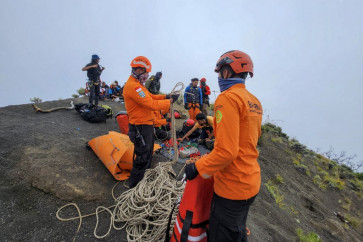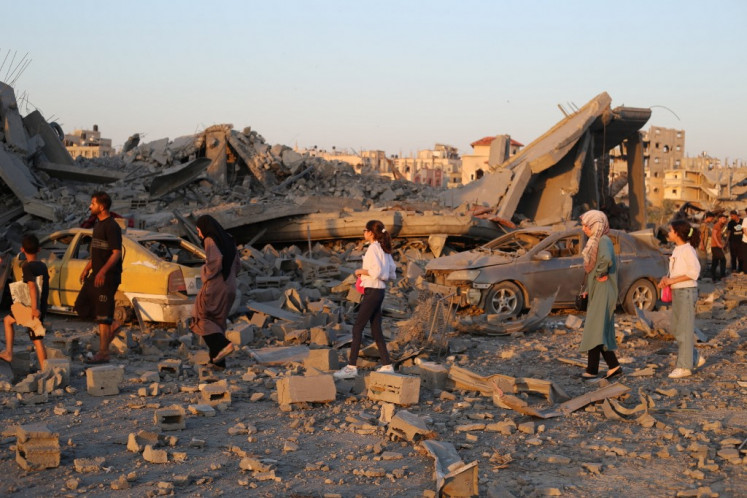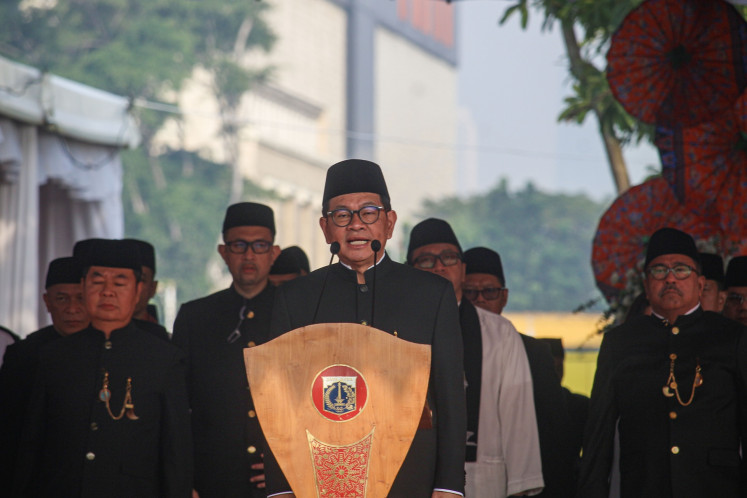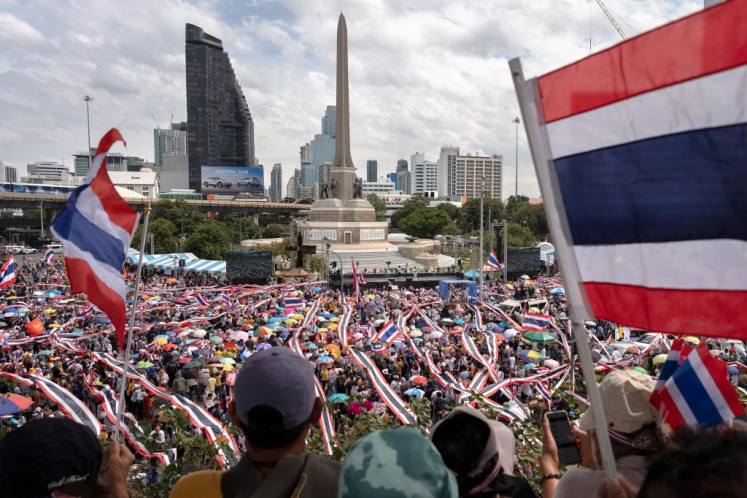Popular Reads
Top Results
Can't find what you're looking for?
View all search resultsPopular Reads
Top Results
Can't find what you're looking for?
View all search resultsVillage crafts future through art, education
A decade ago, Desa Ban village in Karangasem, Bali, had literacy rate of only 15 percent, with most residents untouched by education or modern healthcare
Change text size
Gift Premium Articles
to Anyone

A
decade ago, Desa Ban village in Karangasem, Bali, had literacy rate of only 15 percent, with most residents untouched by education or modern healthcare. Yet the young people in what has been named Indonesia's poorest region are now up-and-coming artists and craftspeople.
Students from six schools, established by the UNESCO-endorsed East Bali Poverty Project (EBPP) across Desa Ban, were in Ubud on Sunday for their first exhibition, "Mountain Villages in Black-and-White Ink", aimed at raising awareness of their desolate region and raising art development funds.
Arts and entrepreneurial skills have given Desa Ban students choices for their future, says EBPP founder David Booth, MBE.
Forty-one Chinese ink works on paper showcase the students' talents, tapped recently by Yogyakarta artist Suratmin Bagus Priyo. The works are considered staggeringly well crafted for artists new to this difficult and unforgiving medium.
Recording life around Desa Ban, one poignant piece shows a one-legged man and his buffalo, while others focus on village life, the sea, religious duties, celebrations and temples.
Desa Ban students also visited Neka Museum and had art lessons with local artist Pranoto and his wife, Kerry Prendergast, while in Ubud.
"These kids are so keen to learn about art techniques that they were up and ready to go by 6 a.m.," said Janet Malloy who hosted the eight students in Ubud.
The development of this impoverished region is a three-phase plan, said Booth. The third phase is to reforest the slopes of Mount Agung and Mount Abang, which were stripped bare by the eruption of Mt. Agung in 1963. The event also affected more than 3000 families in Kubu district, where Desa Ban is located, Booth said.
He added the devastation to Desa Ban was never recorded due to the region's remoteness.
"People were growing only cassava and corn. When I first came here over a decade ago, the people had never seen a teacher or a doctor or midwife," said Booth, who was named a Member of the Order of the British Empire by Queen Elizabeth II for his role in eradicating poverty and helping develop Desa Ban.
"My aim was to eliminate poverty and improve heath, nutrition and education."
So successful was the EBPP that teacher Yenni Mance, from Flores, is working in Desa Ban to gain the experience needed to take its models back to her isolated island.
**
Arts and entrepreneurial skills have given Desa Ban students choices for their future
''
"The kids here have lunch, milk and a multivitamin tablet daily. The tuition and books are free. They do creative writing in English and Indonesian. I hope one day I can also help the people of my village," said Yenni, who led her Desa Ban students to the first and third spots at the provincial Buku Pertamaku (My First Book) competition.
The winner of that competition, 13-year-old Ni Ketut Muri, hails from Desa Ban's poorest and most isolated area of Pengalusan, yet still managed to defeat students from six other regencies.









